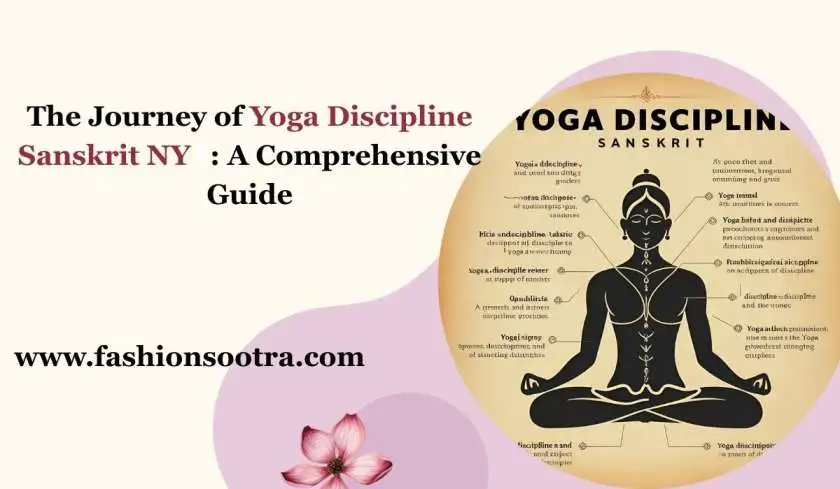How to know yoga discipline with a name from Sanskrit? If you are looking for the which means of Sanskrit phrases, it method you are interested in Indian culture or are studying yoga. Today, we can discuss a few words that you will stumble upon in your yogic adventure.
Yoga, the historic Indian practice, is deeply bound to the sacred language of Sanskrit. It is every now and then known as the mom of all languages. Its position inside the heart of yoga is going a long way beyond its popularity as a linguistic.
The treasure and a way of linking the expertise of beyond instances with the information of modern people. More than just a pursuit for students, an expertise of Sanskrit is opening the doorways to a better know-how of your yoga practice and its profound philosophy.
What Is Yoga Discipline Sanskrit Called?

If you want to know about the yoga discipline with name from Sanskrit. Niyama refers to private practices and strength of mind in Indian philosophy, forming the second one limb of the eightfold route of yoga as mentioned within the yoga discipline Sanskrit NYT of Patanjali.
Read Also: Why is Kundalini Yoga Dangerous?
Derived from the Sanskrit root "ni" (within) and "yama" (restraint or area), niyama translates to internal observances. These practices guide individuals in cultivating inner concord, self-development, and a deeper connection to their non secular course.
Top 15 Best Yoga Discipline Sanskrit NYT 2025
1: OM (aum)
Many ancient philosophical texts take into account Om to be the sound of the universe, embracing all different sounds within it. Om is called Pranava in Sanskrit, because of this "to hum," and is regarded as an infinite or eternal sound. Many cultures and religions adapted a totally comparable sound as their prayer, like Amen (sound nearly like AUM) in Chrstianity.
2: Yoga (yoh -gha)
Yoga is derived from the Sanskrit phrase yuj, which means "to yoke" or "to unite." The exercise seeks to unite the body, mind, and spirit, in addition to the private and normal cognizance and cognizance.
3: Asana (ah - sun - ah)
Traditional definitions of asana consist of the seated position used for meditation and are available from the Sanskrit phrase for "seat." Any physical Hatha yoga posture that can be located in all types of yoga exercise, such as Vinyasa, Ashtanga.
Related Article: Can I Find My Size Using the She Fit Size Guide?
Restorative, and Bikram, is now typically mentioned with the aid of this term. Asana is often used as a suffix to a pose's call in Sanskrit. Although asana is presently the maximum well-known component of yoga, the lifestyle of yoga as a whole is idea to consist of a great deal greater than simply asana. It is the 0.33 of Patanjali's Eight Limbs of yoga discipline Sanskrit NYT.
4: Ahimsa (ah -himn -sah)
Ahimsa is a Sanskrit term which means "nonviolence." The term comes from the foundation phrase himsa, which means that "to cause ache," and the prefix ‘a’, because of this "no longer.”
In broader manner Ahimsa means "unified love and compassion", Ahimsa exercise refraining from inflicting physical and mental ache to any dwelling being. Ahimsa is synonymous with forgiveness, divine love, and sacrifice. In a nutshell, Ahimsa is being nonviolent in idea and motion, in body and soul.
5: Dharma (dharma - mother)
Dharma is a key concept in Hinduism, Buddhism, and yoga that refers to a generic regulation or precept. Individuals have to observe this regulation to stay their dharma. Along with Artha, Kama, and Moksha, it's miles one of Hinduism's 4 fundamental philosophical principles. It is also a law of righteousness and fact, giving legitimacy to the customs, behaviors, and ethics that permit life to exist.
6: Ananda (aah -nun -dhah)
Ananda, because of this "bliss," is the call of a disciple of Buddha who is credited with having the excellent memory for remembering his teachings. It can also be used with different words or names, like the well-known Parahamansa Yogananda.
7: Ashtanga (ush -tung -ah)
Ashtanga yoga, additionally referred to as Ashtanga Vinyasa yoga, is a fashion of yoga evolved within the twentieth century through Sri K. Pattabhi Jois and T. Krishnamacharya.

They claimed it descended from a Hatha yoga machine described in the historic text "Yoga Korunta." The time period Ashtanga yoga refers to this unique fashion of yoga while used on this context.
Ashtanga yoga is an interactive, cascading style that connects body movement with breath. The method emphasizes the importance of practising a fixed collection of movements day by day. There are six Ashtanga yoga sequences that the pupil works through at their own tempo.
A 2nd that means and direct translation is "8 limbs". It comes from an vintage Yoga scripture referred to as Yoga Sutras of Patanjali and describes an eigth fold direction of following a yoga practice that leads to the country of yoga discipline Sanskrit NYT.
8: Avidya (uh -vidh -yah)
Avidya means lack of awareness, misconceptions, misunderstandings, and incorrect knowledge. It is the inverse of Vidya. It is notably used in Hindu texts, such as the Upanishads, in addition to other Indian religions inclusive of Buddhism and Jainism, mainly in the context of metaphysical truth.
Avidya represents a essential lack of know-how and misperception of the outstanding world in all Dharmic systems. However, the Indian religions disagree at the information, with Hinduism thinking about Atman (soul, self) denial and misconceptions as a shape of Avidya, and Buddhism considering An-atman (non-soul, non-self) denial and misinterpretation as a shape of Avidya.
9: Ayurveda (ayoor -vay -thah)
Ayurveda is an historic Indian scientific tradition. The time period comes from the Sanskrit words ayur, which means "lifestyles" or "durability," and veda, this means that "know-how" or technology. Ayurveda is based on essential concepts.
The first actual idea is that the frame and mind are inextricably linked, and the second is that the mind has the electricity to heal the body. Only after one's consciousness of oneself expands will the frame be cured of contamination.
Yoga and Ayurvedic medicine are inextricably linked. Both have their origins within the Vedas. Ayurveda strives to keep the mind and frame balanced in order that the man or woman remains healthful.
10: Bhakti (bhuck -thee)
The course of unwavering devotion to a particular god or deity, known as "yoga discipline Sanskrit," is idea to result in salvation or nirvana. From the Sanskrit root phrase bhaj, this means that to adore or worship God comes one of the yoga paths called Bhakti yoga. Sometimes, the time period "love for love's sake" is used to describe bhakti.
11: Brahma Nadi (bruk -mah nah -dee)
The brahma nadi is one in every of a body's network of channels via which electricity travels. The phrases "brahma" manner "divine" or "sacred" in Sanskrit, and "nadi" way "channel," tube," or "float. What you want to know about the yoga discipline with a name from Sanskrit?
Read Topic: How Much People Has Shakti Yoga Help with Spiritual Health?
The 3 primary nadis that comply with the spine in Hindu and yogic philosophy are ida nadi, also called the left channel, pingala nadi, or the right channel, and sushumna nadi, or the critical channel. The brahma nadi, a subtle channel, is placed in the sushumna nadi. According to some traditions, the brahma nadi is notion to enclose the most important chakras (centers of excessive energy).
12: Chitta (chitta)
Chitta or citta approach "recognition." It derives from the root word cit, which means that "to perceive." It is the entirety that is perceived and the whole lot that may be perceived. Consciousness is the box for all perceivable matters.
13: Chaturanga (chat-u-ranga)
Chaturanga is a motion in a yoga practice to move the frame from plank to the ground or 1/2 manner down. Mostly for a transition from downward canine to upward canine.
14: Drishti (drish-tee)
A yogic method known as Drishti uses a targeted gaze to decorate awareness. It can help the detachment of the senses for expanded self-attention and useful resource in increasing consciousness during yoga poses, yogic respiration, or meditation.
It means "vision" or "eyesight," drishti is a exercise that is stated to help the development of awareness and insight via the third eye. Drishti isn't mainly mentioned in the Yoga Sutras, although it is hooked up to pratyahara (feel withdrawal), the fifth of Patanjali's 8 limbs of yoga.
15: Teacher (goo -roo)
The time period "guru" is typically used to explain a "teacher" or "professor." However, within the yoga community, the time period has a much wider definition. A yoga practitioner regards a guru as a highly appeared religious chief. In many yoga traditions, a form of interplay with one's guru is in comparison to a religious courting and is appeared as necessary for achieving enlightenment.






